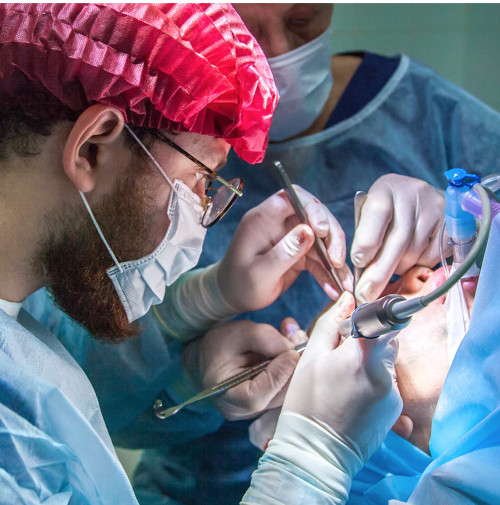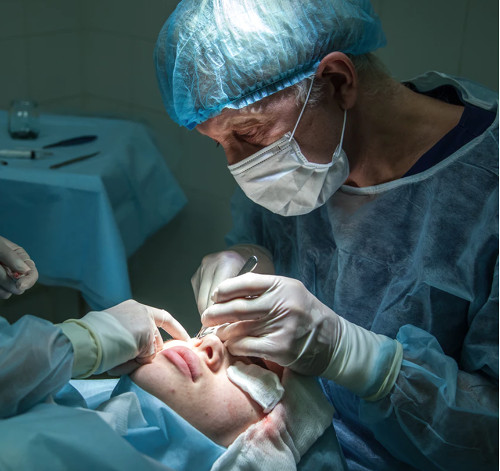
Getting an eyelid lift has quickly become one of the more common procedures when it comes to cosmetic surgery. Known as “Blepharoplasty”, it is one of the most popular plastic surgeries there is that is available on the market today.
But just because it is popular and a safe overall procedure, there are still things to know before going in for the procedure. It is a good rule of thumb to never go into a surgery of any type without having a bit of information about it beforehand.
Know the differences in the procedures
While eyelid surgery is certainly common, not all eyelid surgeries are the same in nature. The procedure that you will need can depend on things like the shape of your eyes as well as other health conditions that could affect the procedure. There are three different types of eyelid surgeries that can be recommended by your eye doctor or specialist:
Double eyelid surgery. This is obviously done to both eyelids and it is a procedure where a crease is made in the upper portion of the eyelid. It creates a larger-looking, wider appearance to the eye. This is a particularly popular procedure in East Asia and is one of the most commonly-referenced Blepharoplasty operations there is.
Upper eyelid. The upper eyelid procedure is meant to help improve partial vision loss and the overall appearance of the eye that can be a result of genetics or the aging process. Focusing on the upper portion of the eyelid, this surgery can fully restore the function of your eye or it can provide something of a more well-rounded appearance that seems to be more open.
Lower eyelid. As the name states, this is focused on the lower half of the eyelid. The esteemed Dr. Valente writes about it in Australia. The procedure itself is meant to focus on removing wrinkles that can permeate the skin around the eye as well as correct “baggy” eyes. It is also meant to improve the overall appearance of the lids. Unlike the upper eyelid surgery, this is more about cosmetic surgery than anything else.
Know the side effects
When you have a surgery or a procedure, there will more than likely be side effects of the procedure. This is common for just about any sort of procedure, but it will be more common in certain age or genetic groups.
It is important to keep this in mind: regardless of the kind of eyelid surgery that you are undergoing, it will take time to see the results. Nothing is an overnight procedure and having the patience to understand that these results will manifest as you heal is the important thing to keep in mind. It can take up to a year to see the full benefits of having an eyelid surgery of any kind, so patience is a virtue in this instance.
Depending on how your surgery goes, there may be other side effects. Things like swelling around your eye, bruising, or perhaps scarring can happen. This depends on the overall condition of your skin as well as the skill of the physician that is conducting the procedure.
Don’t panic
Another side effect that is possible in the wake of a procedure like this is double vision or even blindness. If this happens, it should remedy itself within a day or two, so do not panic if your vision seems to affect in the immediate aftermath. Obviously, if it persists and continues to be an issue, contact your physician so that you can get your eyes checked out to see what the problem is.
Things like dryness, itching in your eye area, or other discomforts around your eye can be treated with medication. Things like prescription medications or eye drops can be given to you by your physician to help you treat the itching and discomfort in a more practical way.
Take the proper steps before jumping into surgery
Don’t just ask to jump right to the surgery portion of the show; make sure that you go through the proper examinations beforehand. Have your physician will give you a thorough examination to assess whether you are indeed a candidate for this procedure. Also, the doctor should be able to properly prepare you for the potential risks associated with this type of surgery and leave you properly prepared for what lay ahead.
Doing this allows your physician to know the exact details of your health going into a procedure like this. If they see something that catches their eye, they can prepare for the aftermath of the surgery by preparing post-recovery plans that are specified to your needs explicitly.
The recovery time is not the same for all patients

It is important to know that the recovery time for Blepharoplasty is generally shorter than a lot of other procedures, though results may vary based on the person getting the procedure and their body specifications. Again: there is no universal time table.
Generally speaking, swelling and bruising is the worst a day after the surgery, but they will begin to dissipate fairly quickly. During the initial 48 hours after the surgery, you should use a cool compress to reduce swelling and bruising around your face and eyes.
Try doing light activities, things like walking, which can help to speed up the healing from the procedure. In the aftermath of the procedure, there are thin bandages that are usually placed gently over the site of the incisions and will be removed several days later. If you have stitches, those can remain for about a week or so, though self-absorbing stitches could be used which would then not require removal.
While eyelid surgery of any kind is common enough that it is not considered to be risky, it is important to do your homework beforehand. See your physician so that there are no unexpected surprises and so that you can go through the recovery process without incident or issue.
Once the recovery has finished and you begin to see the benefits of the surgery, you will find yourself glad that you had the procedure done. Staunch the flow of aging and improve your eyesight with this helpful procedure.
